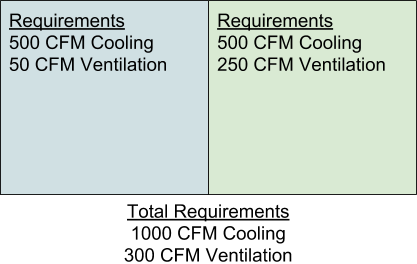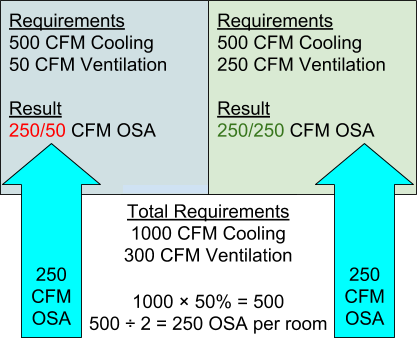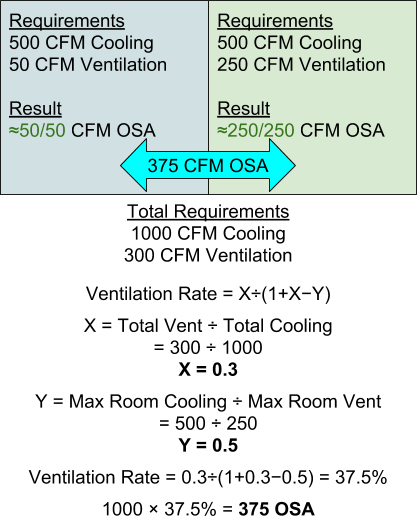Ventilation Calculations
There are two different ways to calculate the ventilation air required in zones: minimum and ASHRAE 62.1.
The minimum calculation is simply the sum of the ventilation required in all the rooms that make up the zone. ASHRAE 62.1 calculates a higher level of ventilation based upon the different levels of ventilation required by rooms on the zone.
A zone that consists of two rooms is illustrated below. Both rooms require 500 CFM of air for cooling. One room requires 50 CFM of ventilation air and the other requires 250 CFM of ventilation air.

Minimum Method
If calculated using the minimum method, you get 1000 CFM of total supply air and 300 CFM of total ventilation air. The system you install needs to provide 30% outside air. You can’t force the outside air to one room or the other. Each will end up with 30% of their supply air being outside air, or 150 CFM. The first room has 100 CFM of extra outside air and the second room has 100 CFM too little.

Maximum Method
A simple solution to this problem is to set the ventilation percentage for the system to be the maximum required ventilation, 50% in this case. If you do that, you get 500 CFM of outside air. Both rooms get 250 CFM of outside air. The requirements for the second room are met, but the first room is oversupplied by 200 CFM.

ASHRAE 62.1 Method
Cooling outside air is expensive, so you want to reduce the amount you bring in. The maximum method will work, but is providing more ventilation than is required. Some of the outside air brought into the first room will travel to the second room. The ASHRAE 62.1 calculation takes this diversity into account and calculates a number between the minimum and maximum values.
The ASHRAE 62.1 calculation for this pair of rooms is shown below.

The ventilation airflow required by ASHRAE 62.1 is 375 CFM, which is greater than the minimum of 250 CFM and less than the maximum of 500 CFM.